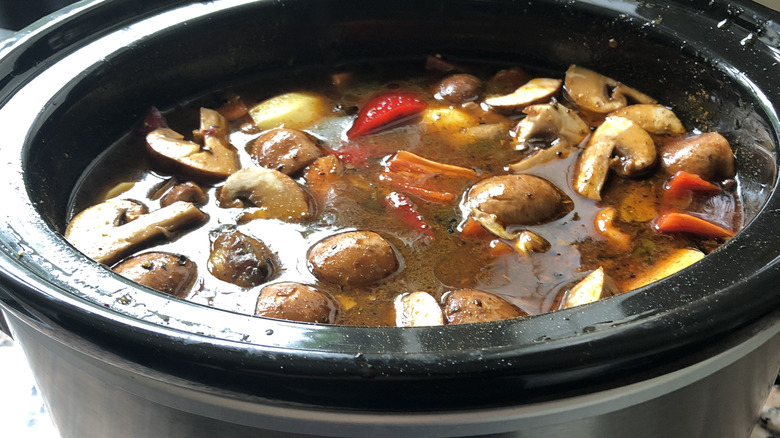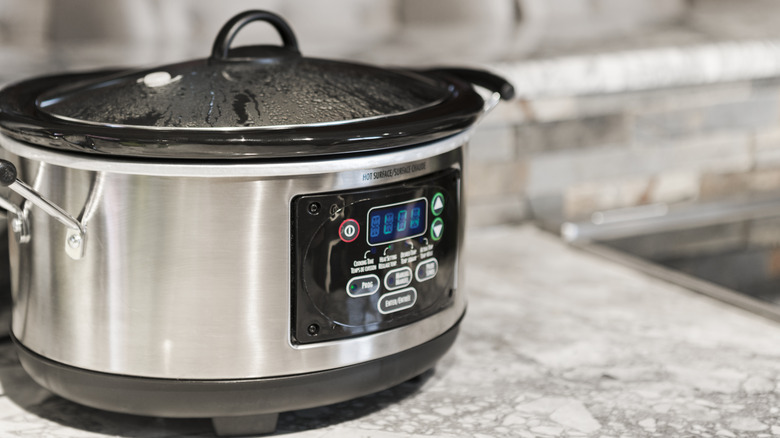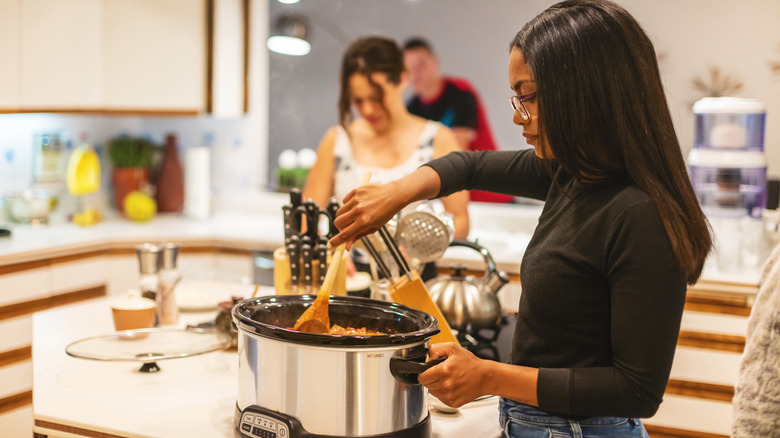The Only Reason You Should Open The Lid When Making A Slow Cooker Meal
Slow cookers — sometimes called Crock-Pots, due to the famous brand name — are one of the most dependable kitchen appliances. They've been around for decades, and, despite becoming more visually modern through the years, these countertop cookers have basically remained the same. Using a slow cooker is easy, but the best part of these contraptions is that you can leave them on all day, allowing you to start a meal in the morning and have it ready after work. But using one requires following a few pieces of advice, including avoiding making common slow cooker mistakes, like opening the lid. Still, there is one time when you can open the lid: to thicken whatever is inside.
Slow cookers are sealed, and the heat creates steam. That steam evaporates, but since it can't make it into the air, it turns into condensation on the slow cooker's lid. For that reason, very little moisture escapes while the food cooks, which is good for some dishes, but it can be a problem if you're attempting to make a thick soup or sauce.
Only open a slow cooker to thicken soup or sauce
Slow cookers are designed to cook at lower temperatures than your oven, but when you open the lid, it's just like opening the oven door: the heat leaves, and the food doesn't cook. That's why you shouldn't open the lid with most dishes. However, you can and should open the slow cooker lid if you need something to thicken up, such as a soup or sauce, because propping the lid open will help reduce the water content through evaporation.
When a slow cooker cooks food, condensation builds on the lid as steam rises and has nowhere to go. That water buildup eventually drips back into the food. The constant moisture means soups and sauces don't have a chance to thicken. By narrowly propping the lid open, such as with a pair of chopsticks, the moisture turns to steam, and that steam has a chance to evaporate out, meaning your sauce, soup, or even stew will lose necessary moisture to get it to the right thickness.
Tips for making soup or sauce in a slow cooker
If you plan on letting the soup or sauce simmer all day, it's best to keep it on low heat. The edges of the slow cooker get pretty hot on high heat, and you don't want to risk the outer edge of the soup or sauce burning.
If you're making a hearty soup (like a slow cooker split pea soup) with a number of ingredients (like onions, carrots, or meat) don't hesitate to add those to the slow cooker right from the start, because they're firm enough that they won't turn to mush. But there are other, more delicate items that often find their way into soups, such as bite-sized veggies like peas or corn. These latter ones should be added toward the end of the soup's cooking cycle; otherwise, they could become too mushy over several hours.
If you're making sauce and are using cream to thicken it or change its texture, add this at the end as well. The cream at the end, coupled with opening the slow cooker lid, will leave you with a tasty, well-thickened soup. Regardless of what you're cooking, the evaporation process doesn't change, so prop that lid open slightly to thicken up your dish.


